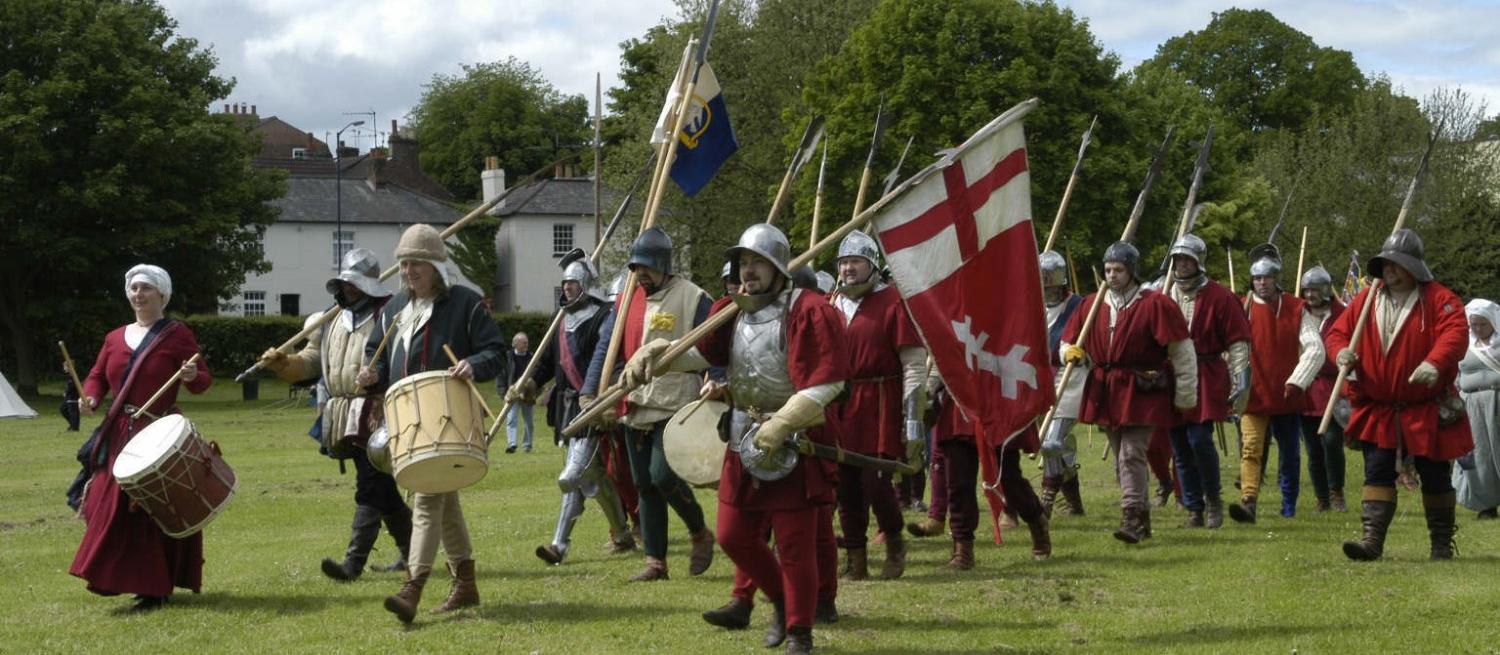22 May marks the anniversary of the First Battle of St Albans.
The battle took place in 1455 and is generally considered as the first major conflict in the Wars of the Roses, the 32 year dynastic feud that split the ruling Plantagenet family. The family was divided between the House of Lancaster, with King Henry VI on one side, and the House of York on the other with Richard, Duke of York, fighting for the throne.
As well as family disputes, there were arguments between noblemen at the top of English society. England had lost the Hundred Years War against the French in 1453 and, as a result, many English nobles were facing financial problems. Government overspending and favouritism by the King towards his chosen aides fuelled discontent. In addition, the King was suffering from bouts of mental health problems, raising questions about his suitability to govern.
In 1455, the King arranged to meet his nobles in Leicester. Richard, Duke of York was not invited. Sensing that his loyalty may be questioned, Richard and his allies headed south to meet the King en route from Westminster to Leicester. Both sides met in St Albans.
Although buildings and some road names have changed, modern St Albans does offer the chance to visualise the geographical aspects of the battle. The King’s troops set up a defensive line in the west of the town – roughly the top part of Holywell Hill from the Sopwell Lane junction, through Chequer Street and up to about half way along St Peters Street. On the east side of the town was a Tonman ditch - a defensive wall that had been built in the 1200s with gated roads leading into the town. This was where the Yorkists set up – from around the area of modern Keyfield Terrace and the White Hart Tap pub, through to Marlborough Road. A blue plaque stands on the site of the long gone Castle Inn, where the King’s Protector of the Realm, Edmund Beaufort, Duke of Somerset, met his fate – at the top of Victoria Street, then known as Shropshire Lane.
The battle was not the first clash between the two sides, but was certainly the first serious outbreak of open fighting between the two. The battle was said to have lasted only half an hour and involved vicious street fighting. Losses and casualties on both sides were relatively minor – about 160 in total out of anything between 7,000 and 10,000 battle participants. Richard, Duke of York, and his allies were the decisive victors. With the King indisposed, Richard served as Protector of the Realm, effectively as head of state but never as King. His son, Richard III would be King one day.
St Albans would also see a second battle in 1461 between the two sides, but 22nd May 1455 marks the date that St Albans was the backdrop to the opening scene of a dynastic struggle that would lead to more conflict and intrigue, and ultimately to the reign of Henry VIII and his Tudor dynasty.
Written by George Chyla, Museum Assistant.
